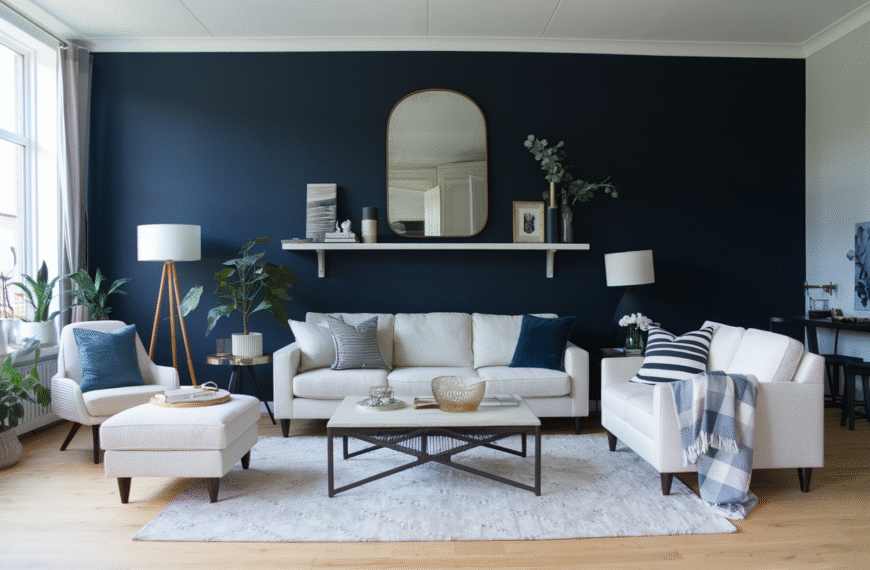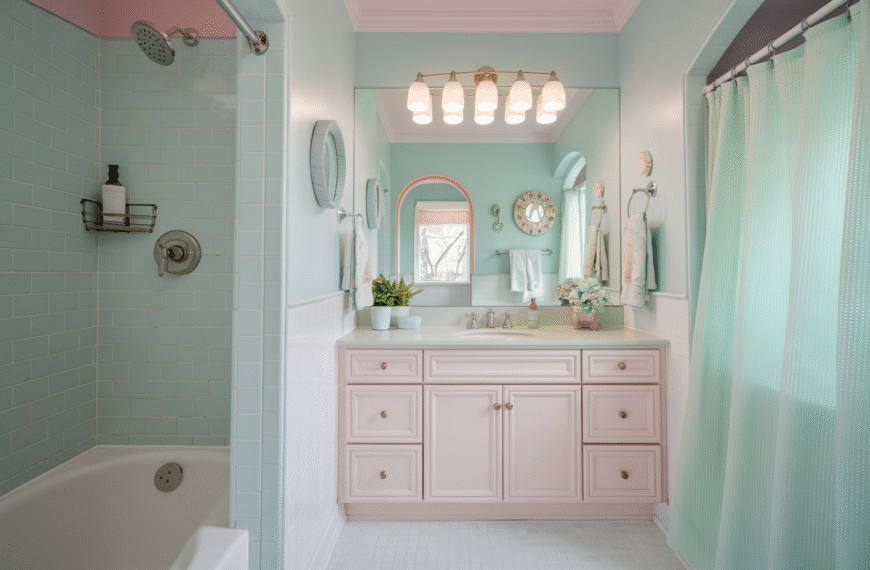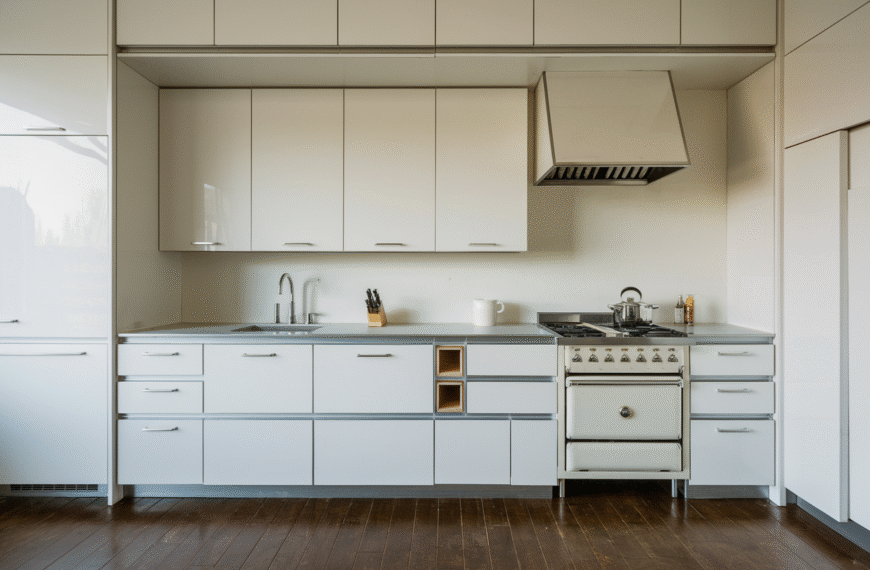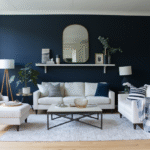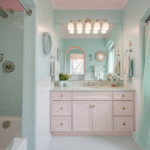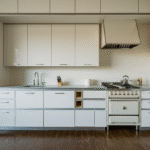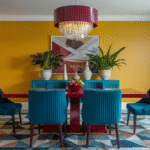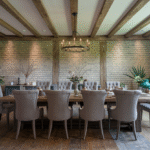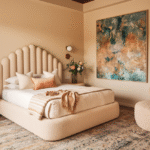
A kids’ playroom can be so much more than just a place for toys. It’s a space where creativity blooms, imaginations run wild, and little ones can truly be themselves. Smart design choices turn even the smallest play areas into exciting zones that encourage learning, movement, and relaxation. Colorful accents, clever storage, and versatile furniture all come together to shape a space that supports playtime and peace of mind alike.
A playroom that’s both fun and functional doesn’t have to sacrifice style. Bright walls, cozy nooks, and multi-use pieces help keep things tidy while still feeling playful and welcoming. Spaces designed with flexibility in mind can grow along with your child, easily transitioning from toddler playdates to school-age projects and quiet reading time.
These 35 brilliant kids’ playroom ideas are packed with practical solutions and delightful inspiration to help you craft a space where your child will love to play, explore, and dream big.
1. Modular Storage Systems

Investing in modular shelving and storage bins is a smart way to keep toys, books, and games organized. These systems offer flexibility, as you can adjust the layout and components as your child’s needs change over time. Modular storage allows you to create sections for different types of toys, such as one for arts and crafts supplies and another for books or dolls, making it easy for your child to find and put away their belongings. Additionally, these systems are designed to be aesthetically pleasing and can easily complement various room styles, from modern to rustic.
2. Interactive Wall Art

Interactive wall art is an innovative way to keep kids engaged while also serving as a decorative feature. Consider adding a chalkboard wall, magnetic board, or dry-erase surface where kids can draw, write, and play. This offers a creative outlet that doesn’t require additional space or expensive supplies. Kids can personalize their walls with their artwork or engage in educational games like word building or math problems. Plus, it’s easy to update and clean, which ensures the walls always look fresh and fun.
3. Built-In Reading Nooks

A built-in reading nook is a wonderful way to encourage a love for books while maximizing space. These cozy corners can be created along a window, under a staircase, or in any unused area of the playroom. Add a soft cushion or a small bench for comfortable seating, and equip the nook with shelves or baskets for easy access to books. The nook can also double as a quiet space for your child to retreat to when they need some alone time. This not only keeps the playroom tidy but also nurtures independent play and reading habits.
4. Colorful Play Mats

Play mats are essential for providing a safe, soft surface for kids to play on, especially if you have hard floors. Look for mats in bold, bright colors and fun patterns that spark your child’s imagination, such as roads for toy cars, alphabet designs, or even farmyard scenes. Many play mats are padded enough to cushion falls and are waterproof, making them easy to wipe down and clean. Not only do they offer comfort and protection, but they also add a vibrant, playful element to the room that’s both functional and aesthetically pleasing.
5. Toy Storage Underneath the Bed

Maximizing space in a kids’ room often means thinking vertically. Utilizing the space under the bed for toy storage is an excellent way to keep the playroom organized and clutter-free. You can incorporate large, rolling drawers or storage bins that slide out easily, allowing toys to be hidden away but still easily accessible when needed. This is especially helpful in smaller rooms where floor space is limited, and it ensures that toys don’t take over the entire room. It’s a smart, simple solution for reducing clutter while maintaining an organized, efficient space.
6. Foldable Furniture

For smaller rooms or multifunctional spaces, foldable furniture is a great way to save space while still providing the necessary function. Foldable tables, chairs, and even desks can be easily tucked away when not in use, freeing up space for playtime or other activities. This versatile furniture allows the room to quickly transition from a quiet reading area to a craft station or toy storage space. Foldable pieces can be found in a wide range of designs, so you can choose ones that complement the overall style of the room.
7. Activity Zones

Dividing the room into activity zones is an effective way to cater to your child’s different interests while keeping everything organized. You could set up a reading zone with a small bookshelf and bean bags, a craft area with a child-sized table and supplies, and a play zone for toys like building blocks, dolls, or a toy kitchen. By clearly defining each area, your child can transition seamlessly from one activity to another without feeling overwhelmed by clutter. Activity zones also help establish routines, making it easier for children to clean up and maintain their space.
8. Open Shelving

Open shelving is an excellent way to store toys and books while keeping them within easy reach of your child. Open shelves allow kids to see their favorite items, promoting independence as they can choose what to play with. However, to avoid the chaos of clutter, use baskets, bins, or small containers on the shelves to keep things organized. This type of storage solution works particularly well in playrooms because it allows for quick access and easy clean-up. Plus, it adds a playful and airy aesthetic to the space without making it feel too closed off.
9. Space-Saving Loft Beds

Loft beds are a great way to maximize vertical space, especially in smaller playrooms or shared bedrooms. By elevating the bed, you free up valuable floor space underneath, which can be used as a play area, study corner, or even a reading nook. Loft beds often come with built-in storage options, such as drawers or shelves, making them even more functional. Some designs feature a slide or ladder for added fun, turning the bed into an exciting play feature as well as a sleeping space. Loft beds are an excellent solution for making the most of limited square footage.
10. Wall-Mounted Toys

Wall-mounted storage solutions are perfect for maximizing the available space in a kids’ playroom. Pegboards, hooks, or small shelves mounted on the wall can hold toys, games, costumes, and art supplies, keeping them organized and off the floor. This storage solution is ideal for items that can be hung or displayed, like dolls, hats, or craft supplies. Wall-mounted toys also make it easier for kids to access their belongings, and it free up floor space for more active play. Additionally, they add a fun and dynamic element to the room’s design.
11. Indoor Playhouse

An indoor playhouse adds a whimsical and imaginative element to your child’s playroom. These structures can be as simple as a fabric tent or as elaborate as a wooden house with windows, doors, and a small porch. A playhouse offers children their own space to retreat, play pretend, and develop social skills. It provides a quiet spot for them to engage in imaginative play, whether they’re pretending to cook, host a tea party, or build a fort. Indoor playhouses also serve as a visual focal point, adding charm and character to the room.
12. Creative Lighting

Lighting can dramatically transform the ambiance of a playroom, and it plays a crucial role in setting the right mood. Use soft, adjustable lighting options, such as dimmable ceiling lights, table lamps, or string lights, to create a warm and inviting environment. For a fun touch, choose playful light fixtures, such as a star-shaped ceiling light or a cloud-shaped nightlight, to add some whimsy to the space. Lighting can also be used strategically to highlight certain areas, like a reading nook or play area, helping to focus your child’s attention on their activities.
13. Personalized Wall Decals

Personalized wall decals are a simple yet effective way to add character and charm to a playroom. These decals can be easily removed and replaced as your child’s tastes evolve. Choose decals that reflect your child’s interests, whether it’s animals, outer space, fairytale characters, or anything else they love. You can even customize the decals with your child’s name or favorite quotes. This personalization helps create a space that feels uniquely their own, sparking creativity and a sense of ownership over the room.
14. Toy Rotation System

A toy rotation system is a smart way to keep your child’s playroom fresh and organized. Instead of allowing all of your child’s toys to accumulate at once, rotate toys in and out of play every few weeks. Store some toys in a closet or out-of-sight storage and switch them out periodically, so your child is always excited to see something new. This system not only keeps the playroom looking neat but also helps reduce overwhelm and keeps kids focused on the toys they have at the moment, encouraging longer periods of creative play.
15. Activity Table

An activity table is a must-have in any playroom, providing a dedicated space for creative tasks like arts and crafts, puzzles, and building games. Choose a table that is the right height for your child, and add storage underneath for art supplies, coloring books, or small toys. Some tables even come with built-in features, such as a dry-erase surface or a construction board for building blocks. Having a designated space for activities helps keep the rest of the room organized and gives kids a focused area to engage in their favorite creative endeavors.
16. Creative Toy Labels

A simple but effective solution to maintain order in your child’s playroom is the use of creative toy labels. Labels make it easier for children to understand where their toys belong, and they can encourage responsibility as they learn to put items away after playing. Use colorful labels with pictures or illustrations of the toys for younger children who are still learning to read. For older kids, try using customizable labels with fun fonts or their names, which can also add a personal touch to the space. This organizational system not only keeps toys neatly stored but also helps instill good habits.
17. Sensory Play Areas

Sensory play is a great way to engage children’s minds and encourage learning through hands-on exploration. Designate a corner of the playroom for sensory activities, such as a sand table, a water station, or a texture wall with different fabrics and materials for tactile exploration. Sensory bins filled with items like rice, pasta, or beads offer endless opportunities for imaginative play and can also be a calming activity for children. Having a dedicated sensory area provides variety and helps children develop important skills, such as motor control, problem-solving, and creativity.
18. Interactive Floor Games

Incorporating interactive floor games into the playroom is a fun way to make use of floor space while also providing an active outlet for kids. Consider games like hopscotch, a large-scale chess board, or a twist on traditional board games that kids can physically engage with. These games encourage movement and physical activity while also helping with coordination, balance, and social skills as children play together. You can use floor decals or paint the games directly onto the floor for a low-maintenance yet highly entertaining solution that brings excitement to the room.
19. Functional Toy Kitchens

Toy kitchens are timeless and promote creative play as children mimic real-life tasks like cooking, serving, and cleaning. A well-designed toy kitchen can also double as an educational tool, teaching kids about food, nutrition, and responsibilities in a fun way. Choose one with storage space for kitchen accessories like toy plates, cups, and utensils, or opt for a compact design that can be easily incorporated into a corner of the playroom. A toy kitchen can help improve fine motor skills and social play as kids engage in pretend cooking and role-playing with friends or family.
20. Climbing Structures

Climbing structures are fantastic for helping children expend energy while developing their motor skills and confidence. Whether it’s an indoor jungle gym, a climbing wall, or a simple climbing ladder, adding a vertical element to the playroom encourages physical activity and imaginative play. You can even include soft mats or cushions around the structure for safety, making it suitable for younger children. These structures not only provide hours of entertainment but also help children develop coordination, strength, and problem-solving abilities as they figure out how to navigate the climb.
21. DIY Craft Station

A DIY craft station is essential for any playroom, offering a designated area where kids can explore their creativity through various art projects. Stock the station with a variety of supplies, including crayons, markers, glue, paper, beads, and fabric, and make it easily accessible for children to use independently. Set up a table with chairs at child-friendly heights, and store materials in clear containers or drawers, making it easy for kids to find exactly what they need. A craft station encourages children to express themselves artistically, and it can be a fun way to make personalized gifts or decorations for the home.
22. Swing or Hammock Chair

If you have the space, incorporating a swing or hammock chair can add a sense of adventure and fun to the playroom. These seating options provide a soothing, calming effect and offer kids a space to relax or read after a day of play. A swing or hammock chair also encourages balance and coordination as children can gently rock themselves back and forth. Choose a sturdy and safe design, and ensure that the chair is securely mounted to avoid accidents. A swing or hammock chair can become a favorite spot in the room, giving kids a place to unwind while still feeling like they’re in the middle of the action.
23. Nature-Inspired Playroom Design

Incorporating nature-inspired elements into a playroom design creates a calming, grounding environment for kids to play and learn. You can bring in natural textures like wooden furniture, woven baskets, or a jute rug. Add plants that are safe for children to create a sense of tranquility, or decorate the walls with nature-inspired murals or wall decals featuring animals, trees, or flowers. A nature-themed playroom helps children connect with the outdoors, providing them with a soothing and enriching space to explore and play. These natural elements can also enhance creativity by encouraging kids to imagine new worlds and adventures rooted in the beauty of the natural world.
24. A Play Tunnel

Play tunnels are a great way to introduce an element of exploration and physical activity into the playroom. These collapsible fabric tunnels can be easily stored when not in use, but they provide endless entertainment as kids crawl through them, creating their own obstacle courses or playing games with friends. You can find tunnels in various sizes, some even with attached play tents, making them perfect for larger playrooms or rooms with limited space. Play tunnels encourage movement, coordination, and imaginative play, as kids transform the tunnel into different play scenarios, like a secret passage or a racecourse.
25. Wall-Mounted Clocks with Fun Shapes

Introduce an educational element into the playroom with a wall-mounted clock that features fun, colorful designs. Not only will it help kids learn to tell time, but it will also serve as a playful decorative feature. Choose clocks with vibrant designs or shapes like animals, numbers, or geometric patterns, which can tie into the room’s theme. A clock can help teach children valuable time-management skills, while its bright colors and whimsical style add personality and fun to the room. You can even pair it with a daily routine chart to further promote learning about time and structure.
26. Multi-Purpose Bean Bags

Bean bags are a versatile addition to any playroom, providing comfortable seating while doubling as storage. Many modern bean bags come with built-in compartments where kids can store their toys, books, or blankets, allowing you to keep the space tidy while offering a cozy place to relax. Bean bags can be used for lounging, reading, or watching movies, making them a perfect all-in-one solution for a kids’ playroom. Plus, they’re easy to move around, so children can rearrange their seating options as needed for different activities.
27. Interactive Learning Boards

Interactive learning boards are a great way to combine education with play in a kids’ playroom. These boards can feature letters, numbers, shapes, and animals, and can be tactile, such as a puzzle board or an abacus-style game. Some learning boards come with magnets that allow kids to move pieces around, making it both fun and educational. These boards are ideal for younger children who are still developing their cognitive skills and can be placed on the wall or as part of an activity table, providing a dynamic and engaging tool for early learning.
28. Toy Hammocks

Toy hammocks are an efficient and charming way to store soft toys, stuffed animals, or smaller plush items. These hammocks, typically mounted in corners or along the ceiling, provide a cozy, space-saving solution for keeping these toys off the floor. They not only help reduce clutter but also add a whimsical, fun design element to the playroom. Kids can easily toss their stuffed animals into the hammock, making clean-up time both efficient and enjoyable. Plus, the hammock’s relaxed style complements most room themes, whether you’re aiming for a cozy, bohemian, or modern look.
29. Interactive Light Fixtures

Incorporate light fixtures that can also serve as a play element. Consider light-up wall panels, lamps with adjustable colors, or projectors that cast fun images like stars or underwater scenes onto the walls. These interactive lighting features add a sense of magic to the room and can help set the mood for different activities, such as winding down with a bedtime story or playing during the day. With adjustable settings, you can change the lighting based on the time of day, creating the perfect ambiance for learning, play, or rest.
30. Cozy Floor Cushions

Floor cushions are a fantastic addition to any playroom, providing comfortable seating without taking up too much space. They’re especially useful for playrooms where children gather to read, chat, or engage in group play. Choose large, soft cushions that can be arranged in a circle or around a small table to create a cozy gathering space. Floor cushions are perfect for creating a relaxed and casual vibe, allowing kids to engage in activities comfortably and with freedom of movement.
31. Chalkboard Walls

Chalkboard walls are a creative and interactive addition to any playroom, offering endless opportunities for drawing, writing, and learning. You can designate a section of a wall as a chalkboard area, allowing children to express their creativity, practice writing their names, or simply doodle freely. This feature can be a functional and fun outlet for kids to practice their skills, such as letters and numbers, or to work on their art. The best part? You can easily erase the chalk, making it a reusable and ever-changing surface. You can even include a shelf nearby for chalk storage, keeping everything organized and accessible.
32. Reading Nook with Cozy Lighting

A reading nook is a must-have in any kids’ playroom, providing a quiet space where children can unwind and dive into their favorite books. Add a comfy chair or a small sofa, surrounded by shelves of books, and brighten the space with cozy lighting like fairy lights or a soft table lamp. You can also include plush pillows and soft blankets to make the nook even more inviting. This small, dedicated space can become a child’s favorite corner to read, relax, or even have a private moment away from the hustle and bustle of playtime.
33. Customizable Wall Art

Customizable wall art allows you to personalize the playroom while keeping the design fresh and exciting. Choose artwork that can grow with your child, such as a space where they can add their own drawings or paint over a chalkboard mural. Alternatively, opt for framed prints that can be swapped out as your child’s interests change, ensuring the room evolves with them. The flexibility of customizable art means that you can continually refresh the space, making it an ongoing creative project that involves the child in the design process.
34. Mini Art Gallery

Create a mini art gallery by dedicating a wall or section of the playroom to display your child’s artwork. This can be done by framing their paintings, drawings, or 3D creations and hanging them in an organized yet stylish manner. You can rotate the art regularly to give them a sense of accomplishment and keep the space looking fresh. To add an extra touch of creativity, let your child help select and arrange the pieces for display, making them feel like they have a hand in curating their own gallery. A mini art gallery not only showcases their work but also encourages them to continue creating.
35. Rotating Toy Storage

Rotating toy storage is a clever and functional way to manage your child’s growing collection of toys while maintaining a tidy room. This storage system works by rotating toys in and out of sight, keeping only a selection of toys accessible at a time, while the rest are stored out of view in bins or cabinets. By limiting the toys available, kids can focus on the ones they have, fostering creativity and imagination with fewer distractions. Additionally, rotating toys keeps the room from feeling cluttered and makes each new set of toys feel fresh and exciting.
* The kids’ playroom ideas you’ve just explored show how thoughtful design can strike the perfect balance between fun and functionality. More inspiration is on the way to help you create spaces your whole family will love.



